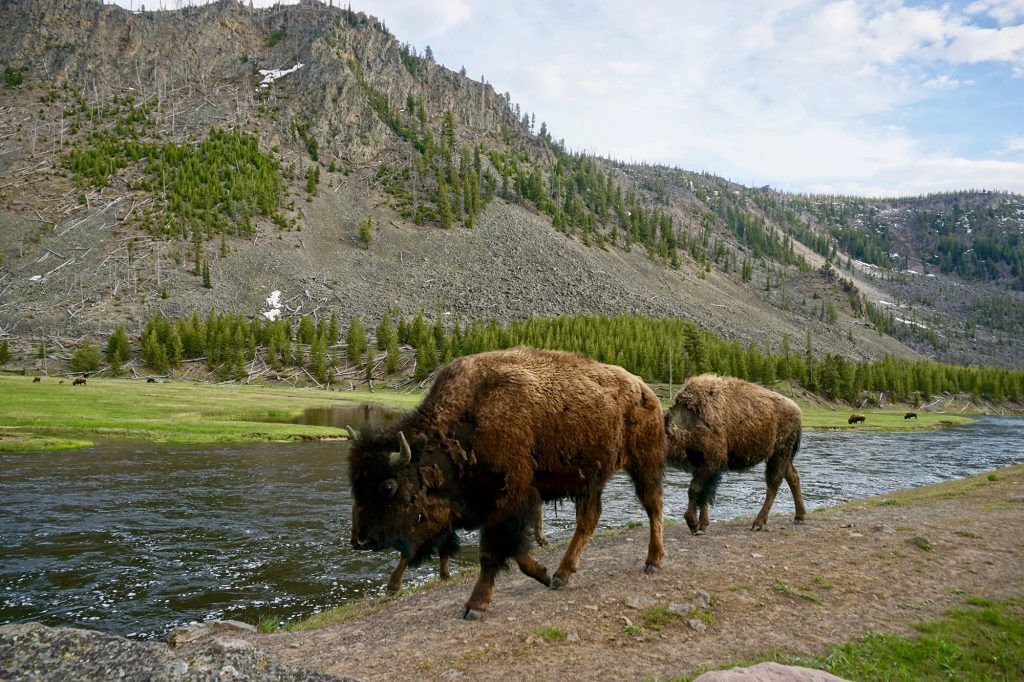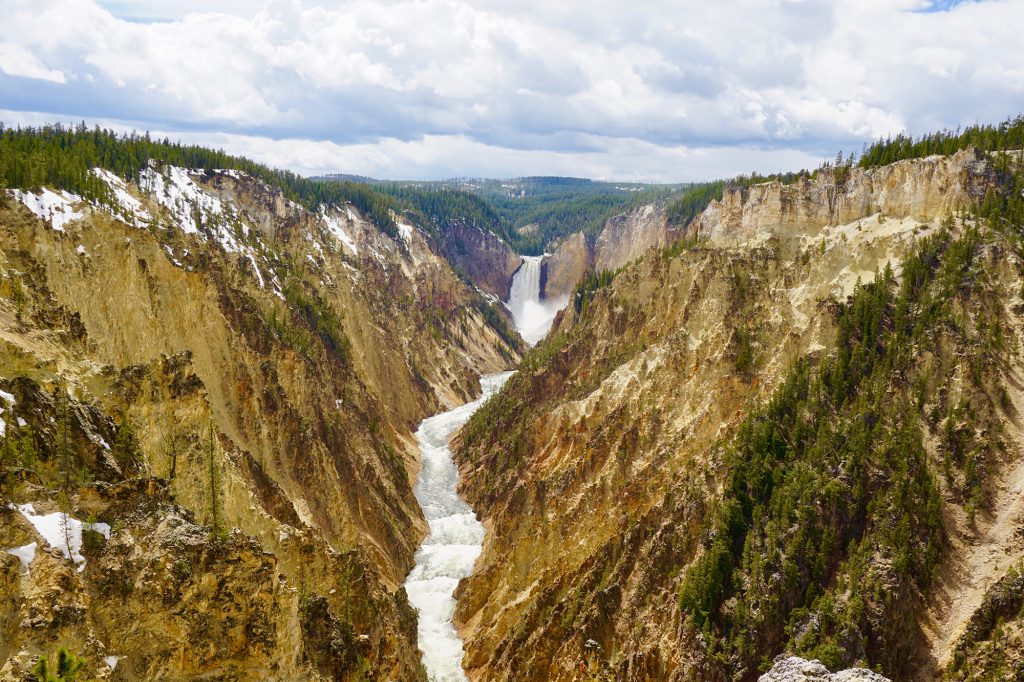It was my first visit to Yellowstone National Park in Wyoming, and despite the early season quiet, the place was kinetic. Its namesake river ripped throughout the Grand Canyon of the Yellowstone, the unrelenting power all you needed to know about how the jagged gorge came to be. Elsewhere in the park, the ground strained to contain pools of boiling mud and steam hissed from gemstone pools and hidden fissures. Occasionally, bison lumbered past, their swagger suggesting nothing short of majesty.
It isn’t so difficult to imagine slipping back in time here. The land feels prehistoric, primeval even, like a stegosaurus might saunter past just before the ground gurgled open to swallow you whole. That is, of course, only if you squint hard enough to block out the roads, walkways, buildings and tourists daring one another to get closer and closer to the bubbling pools and spurting geysers.

What was Yellowstone before it was “Yellowstone”?
It’s important to not just imagine but to know that the place we call Yellowstone wasn’t always the source of bison selfies, nor was its pre-park existence devoid of humans. Its indigenous inhabitants — including, but certainly not limited to, the Crow and Shoshone people — are still deeply connected to the land, despite having been pushed from their homelands by the deceptive practices of the U.S. government and other opportunists who saw a false “wilderness” to be claimed and money to be made.
Before Yellowstone was a park, it was a home — where, yes, the buffalo roamed. But also where people moved with the seasons and subsisted on the earth’s gifts, not yet bothered by European trappers and camera glares. Where skilled land managers used thoughtful fire management techniques to keep wild conflagration at bay and renew the ground for its next bounty. Where people sought not a bucket list experience but divine connection and healing from the wondrous steam.
Then European Americans arrived. Beginning in the early 19th century, hunters, trappers and prospectors traded with the Crow and Shoshone people, while also decimating game populations and introducing disease. Others documented the region under the guise of conservation.

These “explorers” included geologist Ferdinand Hayden, who led a government-sponsored expedition in 1871 that resulted in a written report, photographs and paintings. Those materials convinced President Ulysses S. Grant to sign an Act of Dedication on March 1, 1872, reserving over 2 million acres to create Yellowstone National Park. The area’s Indigenous people, who’d already ceded lands to earlier treaties and to European settlers, were pushed further from their home, replaced by tourists who arrived on newly-built railways a decade later.
This story repeats for many of our earliest parks. Like Yellowstone, every national park was once a home — for plants and animals now extinct, for people who’ve been treated as though they are, too. When we visit these places, it’s important to not only understand their history but also recognize that Native people are still connected to these lands today through an ancestral bond deeper than any canyon, more powerful than any geyser.
XX Shawnté Salabert.
Before your next park visit, consider reading Dispossessing the Wilderness, which outlines the origins of several parklands, including Yellowstone. Learn about the tribes with ancestral connections to these lands (Native-Land.ca offers a starting point). Patronize Native businesses near these parks. Use indigenous names for locations and landmarks. Support the work of organizations and activists, such as Indigenous Women Hike, NativesOutdoors, Native Women’s Wilderness, Tara Houska, Dallas Goldtooth, Winona LaDuke, the Gwich’in Steering Committee and so many more. This story first appeared in RANGE Magazine Issue 11: Origins. You can buy your copy HERE.
